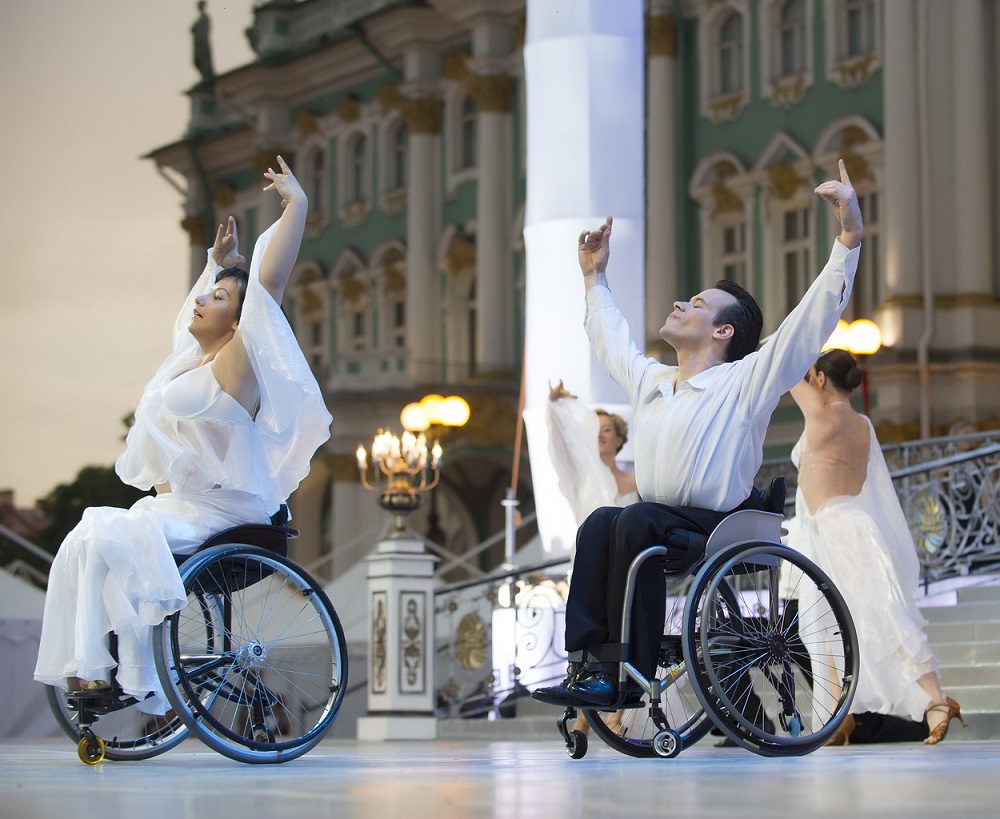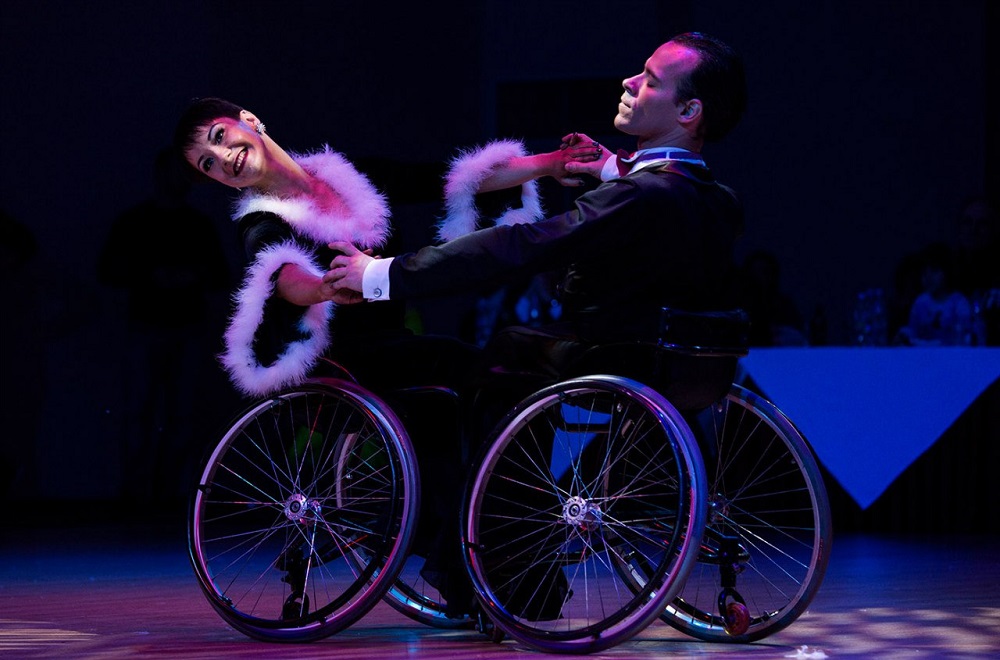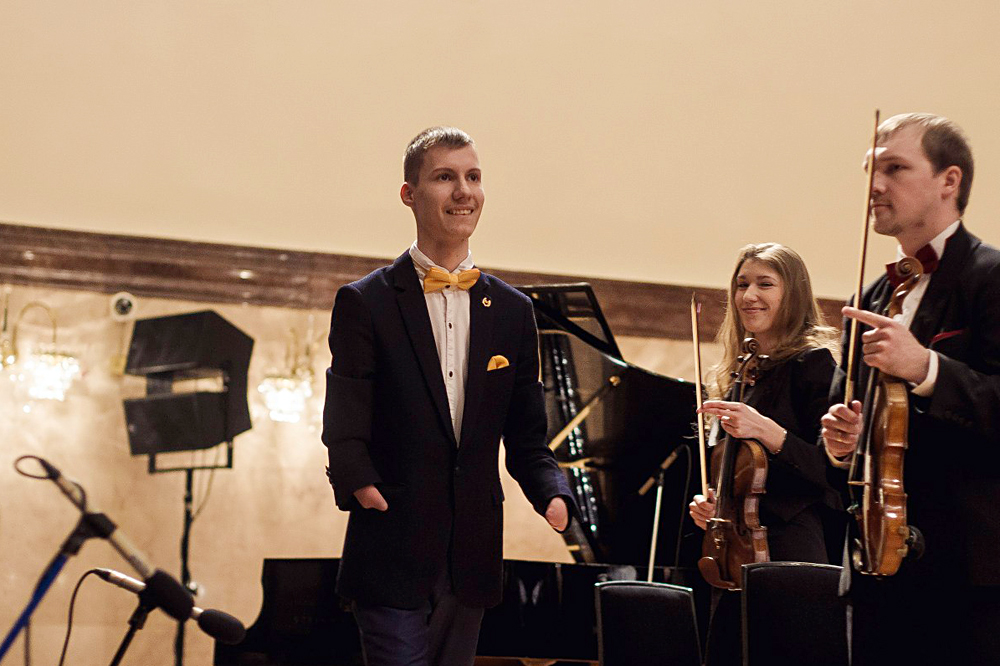Dancing on wheels: How Russia trains its World Wheelchair Dance champs

The City Day in St. Petersburg.
Press photoAt the entrance to the sports facility in the heart of St. Petersburg, a girl in a wheelchair is sitting on a massive granite front step. She has come for training and asks to call the guard. He helps the girl to go inside – at the entrance there is no ramp.
The girl is in fact an honored master of sports of wheelchair dance, a member of the Russian national team that topped the medals table (5 gold, 4 silver, 6 bronze) at the 2015 World Championship in Wheelchair Dancing in Spain.
Coaches from the Academy of Russian Ballet
The world champions train in a small room. The dancers are confined toa wheelchair for different reasons, joined the club largely on the advice of family and friends.
 The 2015 World Championship in Wheelchair Dancing in Spain. Source: Press photo
The 2015 World Championship in Wheelchair Dancing in Spain. Source: Press photo
According to Yelena Lozko, president of the Russian Wheelchair Dance Sport Federation, first of all, dancing serves as a method of rehabilitation: A person learns to control the body and the muscles, learns to breathe. Social function is also quite essential, as usually people in wheelchairs are insecure.
“The female dance partners feel shy about wearing skirts for first recitals; they try to put on high-necked outfits. However, then they become very open and bright on the dance floor and in life,” said Lozko. Almost everyone who is a member of the club has a family and either studies or works.
Becoming champion fora dare
Alexandra Berdnik, multiple national champion, a world and European champion, participant of the Paralympic ceremonies in Sochi, took classes in wheelchair dance company, when she was little, but in 2007 she had to leave for health reasons.
"I really wanted to dance,” said Berdnik, “and then Maxim, who joined the dance company, advised me to come to ‘dancing on wheels.’ He just dared me.”
Berdnik came – and stayed. She now travels a lot around the world to take part in dance competitions. She has learned English and started learning Spanish, and in general wheelchair dancing has helped her to become more sociable.
“It is very difficult to dance sitting in a wheelchair:
 Source: Press photo
Source: Press photo
At first I would come home after training and fall asleep in my clothes. Many people cannot handle these stresses, however, in the end; dancing is important to enjoy yourself on the parquet floor. This is a very serious physical and psychological help," she said.
This year, the team is performing at the Open Championships in Kazakhstan, in Finland, at the World Cup in St. Petersburg and at the European Championship. All of this requires hard training.
“We have great coaches. Some of them are even hereditary, whose families have worked in the Vaganova Academy of Russian Ballet, therefore, the level of training is very high,” said Yelena Lozko.
‘We're not going to Rio’
The coach of the Russian national team is Konstantin Vasilyev. A member of the International Paralympic Committee, last year he received the title of honored coach of Russia.
“Wheelchair dance is a Paralympic sport, but it is not included in the sports program of the Paralympics,” he said. “For instance, we're not going to Rio. And the budgetis calculated exactly on the basis of the program of the Olympic Games.”
Vasilyev believes that the Russian team is unique. The single category in wheelchair dancing, which now has spread around the world, first appeared in Russia — it is not so easy to find a pair for a person in a wheelchair.
“And don't forget that we invented Combi-freestyle, where acrobatics is allowed, unlike in the traditional program. The Latin American countries liked this style,” said Vasiliev.
Russia is far from the world’s most progressive stateswhen it comes to helping people with disabilities. However, Yelena Lozko believes that there are some positive trends developing.
She still remembers the late 1990s, when at the first major competitions that she organized there were no volunteers or infrastructure, and no one met athletes at the airport. Now, however, all this is available and awareness is continuing to grow, she said.
All rights reserved by Rossiyskaya Gazeta.
Subscribe
to our newsletter!
Get the week's best stories straight to your inbox
